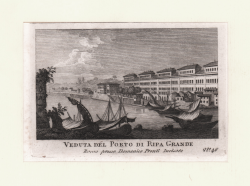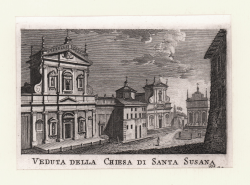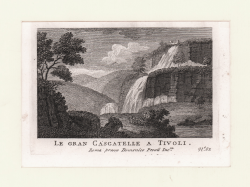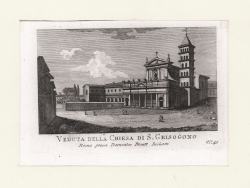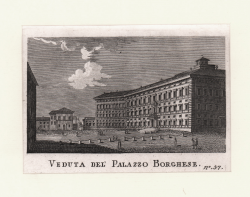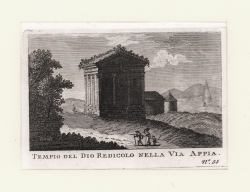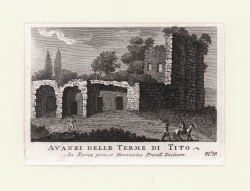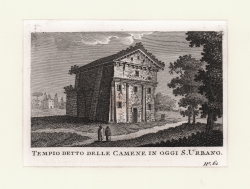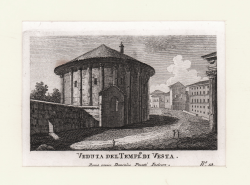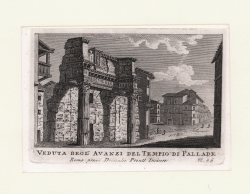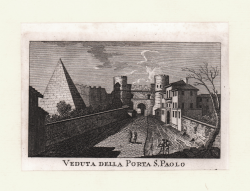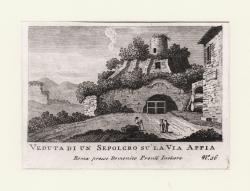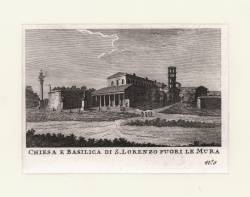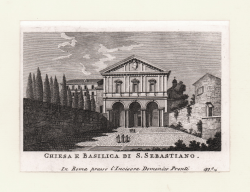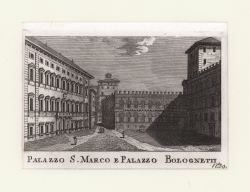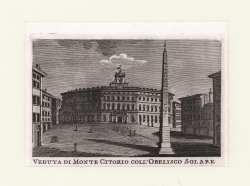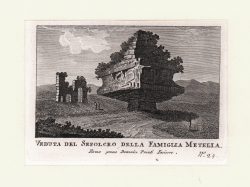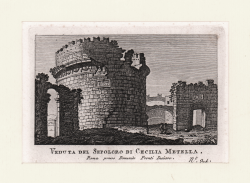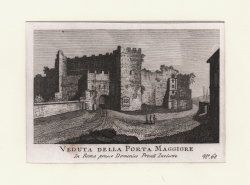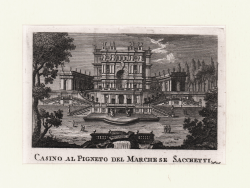Veduta della Chiesa di Santa Susanna
Domenico Pronti
Code:
S34536
Measures:
115 x 85 mm
Year:
1795 ca.
Veduta della Chiesa di S. Grisogono
Domenico Pronti
Code:
S21727
Measures:
115 x 85 mm
Year:
1795 ca.
Tempio del Dio Redicolo nella Via Appia
Domenico Pronti
Code:
S21746
Measures:
115 x 85 mm
Year:
1795 ca.
Tempio detto delle Camene in oggi S. Urbano
Domenico Pronti
Code:
S21680
Measures:
115 x 85 mm
Year:
1795 ca.
Veduta degl'Avanzi del Tempio di Pallade
Domenico Pronti
Code:
S29647
Measures:
115 x 85 mm
Year:
1795 ca.
Veduta di un Sepolcro su la Via Appia
Domenico Pronti
Code:
S21747
Measures:
115 x 85 mm
Year:
1795 ca.
Chiesa e Basilica di S. Lorenzo fuori le mura
Domenico Pronti
Code:
S21705
Measures:
115 x 85 mm
Year:
1795 ca.
Chiesa e Basilica di S. Sebastiano
Domenico Pronti
Code:
S21704
Measures:
115 x 85 mm
Year:
1795 ca.
Palazzo S. Marco e Palazzo Bolognetti
Domenico Pronti
Code:
S21718
Measures:
115 x 85 mm
Year:
1795 ca.
Veduta di Monte Citorio coll'Obelisco Solare
Domenico Pronti
Code:
S34566
Measures:
115 x 85 mm
Year:
1795 ca.
Veduta del Sepolcro della Famiglia Metella
Domenico Pronti
Code:
S34551
Measures:
115 x 85 mm
Year:
1795 ca.
Veduta del Sepolcro di Cecilia Metella
Domenico Pronti
Code:
S29644
Measures:
115 x 85 mm
Year:
1795 ca.
Casino al Pigneto del Marchese Sacchetti
Domenico Pronti
Code:
S32454
Measures:
115 x 85 mm
Year:
1795 ca.

